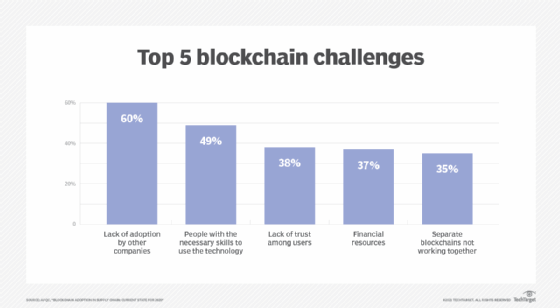Blockchain technology has emerged as a transformative force, promising enhanced security, transparency, and efficiency across various sectors. However, despite its potential, the widespread adoption of blockchain faces several significant challenges. Understanding these hurdles is crucial for businesses and organizations looking to leverage blockchain technology effectively.
Scalability Issues
One of the most pressing challenges facing blockchain adoption is scalability. Traditional blockchain networks, such as Bitcoin and Ethereum, are known for their limited transaction processing capabilities. For instance, Bitcoin can handle roughly 7 transactions per second, while Ethereum manages about 30. In contrast, conventional payment systems like Visa can process thousands of transactions per second. This discrepancy highlights a major scalability issue, as blockchain networks struggle to accommodate large volumes of transactions quickly and efficiently.
Efforts to address scalability include the development of second-layer solutions and alternative consensus mechanisms. Technologies such as the Lightning Network for Bitcoin and Ethereum 2.0’s transition to Proof of Stake are steps in the right direction. However, achieving the level of scalability required for mainstream adoption remains a significant challenge.
Regulatory Uncertainty
Regulatory uncertainty is another major obstacle to blockchain adoption. Governments and regulatory bodies around the world are still grappling with how to classify and regulate blockchain technologies and cryptocurrencies. The lack of clear, consistent regulations can create confusion and hinder investment and development in the blockchain space.
For businesses, navigating the complex and evolving regulatory landscape can be daunting. Companies may face challenges in ensuring compliance with existing regulations while also anticipating future regulatory changes. This uncertainty can lead to increased risks and costs, potentially stifling innovation and slowing down the adoption of blockchain technology.
Integration with Legacy Systems
Integrating blockchain technology with existing legacy systems poses a significant challenge for many organizations. Legacy systems, which are often outdated and incompatible with modern technologies, can create barriers to the seamless implementation of blockchain solutions.
Organizations must invest in considerable resources to either upgrade their legacy systems or develop new systems that can interact with blockchain networks. This process can be time-consuming and costly, posing a significant hurdle for companies looking to adopt blockchain technology without disrupting their existing operations.
Security Concerns
While blockchain is often praised for its security features, it is not immune to security concerns. Issues such as smart contract vulnerabilities, 51% attacks, and potential exploits in blockchain protocols can pose risks to blockchain networks.
Smart contracts, which are self-executing contracts with the terms of the agreement directly written into code, can contain bugs or vulnerabilities that may be exploited. Additionally, a 51% attack, where a single entity gains control of more than half of a blockchain network’s computational power, can compromise the integrity of the network.
Addressing these security concerns requires ongoing research and development to strengthen blockchain protocols and ensure robust security measures are in place.
Energy Consumption
Energy consumption is a notable challenge for blockchain adoption, particularly for networks that rely on Proof of Work (PoW) consensus mechanisms. PoW, used by Bitcoin and other cryptocurrencies, requires substantial computational power to solve complex mathematical problems and validate transactions. This process consumes a significant amount of electricity, leading to environmental concerns and high operational costs.
Efforts to mitigate the environmental impact of blockchain include exploring alternative consensus mechanisms, such as Proof of Stake (PoS), which are less energy-intensive. However, transitioning from PoW to PoS and other energy-efficient solutions presents its own set of challenges and requires significant changes to existing blockchain networks.
Public Perception and Trust
Finally, public perception and trust in blockchain technology can impact its adoption. Despite its potential benefits, blockchain technology is often associated with cryptocurrencies and speculative investments, leading to skepticism and reluctance among some individuals and businesses.
Building trust in blockchain technology involves educating stakeholders about its benefits and addressing misconceptions. Demonstrating successful use cases and showcasing real-world applications can help shift perceptions and foster greater acceptance of blockchain technology.
Conclusion
While blockchain technology holds tremendous promise, its adoption is impeded by various challenges, including scalability issues, regulatory uncertainty, integration difficulties, security concerns, energy consumption, and public perception. Addressing these challenges requires a concerted effort from developers, businesses, and regulators to advance blockchain technology and unlock its full potential. As solutions to these issues continue to evolve, the path to widespread blockchain adoption may become clearer, paving the way for a more secure, transparent, and efficient digital future.

